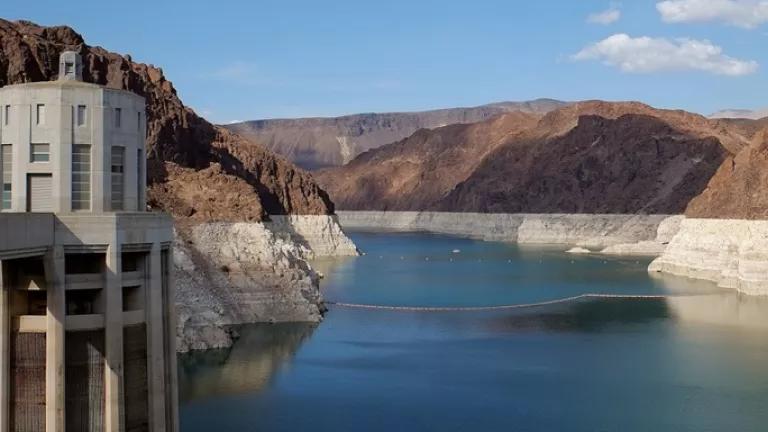Use Less Water...Pollute Less Water: Sacramento Can Reduce Sewage Overflows Through Water Conservation
In about 770 communities around the country, sewer pipes are designed to carry sewage and rainwater in the same pipes – but treatment plants don’t have the capacity to treat it all when it rains. In these places – mainly in the Northeast, Midwest, and Pacific Northwest – raw sewage is dumped into rivers, lakes, and coastal waters (and sometimes into streets and basements) when storm runoff overloads the local sewers.
Sacramento, California, is one of the few cities outside those 3 regions to suffer from this particular problem. (Many other places throughout the country, however, do experience sewage overflows when rainwater gets into sewage-only pipes, where it was never meant to go, or when aging sewer lines literally break or become clogged.)
At several locations along the Sacramento River – which flows south to the endangered San Francisco Bay Delta – the city of Sacramento releases over 200 million gallons of partially-treated or untreated sewage in a typical year, whenever the combined amount of storm runoff and sewage exceeds the capacity of the treatment system.
Traditionally, cities have tried to address this problem – when they have tried to address it – by building bigger pipes, pumps, tanks, and tunnels to hold the overflow, routing it back through a treatment plant after a rainstorm has passed. But the expense of this approach, as well as the folly of treating valuable rainwater as a waste, has motivated many communities to turn to “green infrastructure” techniques, which treat rainwater as a resource. These cities, counties, and water districts use rainwater to nourish new urban green spaces, replenish groundwater, and supplement urban water supplies – keeping it out of over-burdened sewer systems, before it has the chance to trigger a sewage overflow.
By the same token, reducing the amount of wastewater that our homes and other buildings generate can also help prevent sewage overflows. The less water we use, the less sewage we put into our local sewer system, and the more room there is for the system to collect and treat everything that flows into it, even when it rains.
*****
Using less water = less wastewater into sewers = less sewage overflow = Cleaner rivers
*****
For exactly this reason, the U.S. Environmental Protection Agency (EPA) recognized almost twenty years ago that water conservation helps reduce sewage overflows. (See page 8-3 here.)
What’s more, EPA’s sewer overflow rules, under the Clean Water Act, require communities like Sacramento to “maximize the use of the collection system for storage.” In plain English, that means keeping as much space as possible within the sewer system available to handle any rainwater makes its way into the sewers. Water conservation is a great tool for doing exactly that.
That’s why NRDC sent a letter last month to the California Regional Water Quality Control Board, regarding Sacremento’s sewage overflows. We urged the state agency to direct Sacramento to accelerate – within those portions of the city that contribute to sewage overflows – its existing program of installing water meters and charging customers for water service based on the amount of water they use.
As noted in our letter, the city’s new Water Conservation Plan anticipates that customers will reduce water consumption by 10% when they are billed based on how much water they use. (It doesn’t take a rocket scientist to figure out that people will use less water when they have to pay-per-volume. The California Urban Water Conservation Council actually estimates that such “volumetric billing” reduces water use by 20% per customer.)
Sacramento’s new Water Conservation Plan has much to recommend it. But the plan does not improve upon the city’s existing meter installation program, which is being phased-in over an extended, 12-year schedule. (According to the plan, 60% of single-family homes, and 70% of multi-family residential buildings, were unmetered as of June 2012.)
The city’s plan also does not prioritize, for early meter installation, neighborhoods that contribute to sewer overflows.
And the plan frankly acknowledges that its many voluntary water conservation programs will depend on the implementation of metering, and volumetric billing, to create an incentive for customers to participate at all.
With our modest proposal – that Sacramento should prioritize metering in neighborhoods that contribute to sewage overflows – we hope to accelerate progress towards a healthier Sacramento River and Bay Delta. But we also aim to set an example for how states should use the Clean Water Act to promote both clean water and efficient water use, all at the same time. Our proposal flows directly from the Clean Water Act rules described above – rules that are already incorporated into the city’s pollution discharge permits.
Our letter also points out that, on the opposite side of the country – and in a region with comparatively plentiful water resources – New York City is counting on its own water conservation efforts to reduce sewer overflows by 1.7 billion gallons per year. We’ve asked state regulators in New York, as well, to incorporate this approach into New York City’s Clean Water Act permits.
California and New York have already led the way on so many progressive environmental policies. By using the tools the Clean Water Act already provides, these states have an opportunity to lead the way on linking water conservation and clean water.
It’s simple: Use less water, pollute less water. Let’s get to it.




